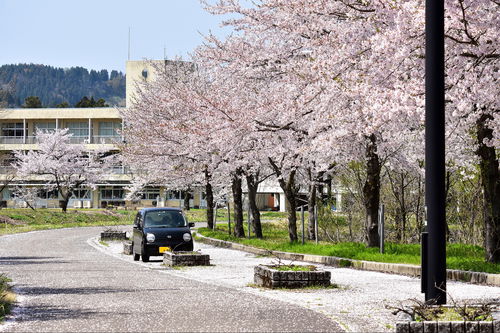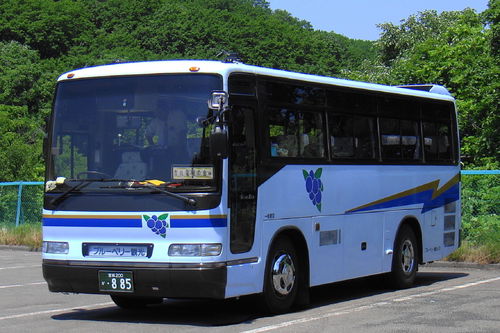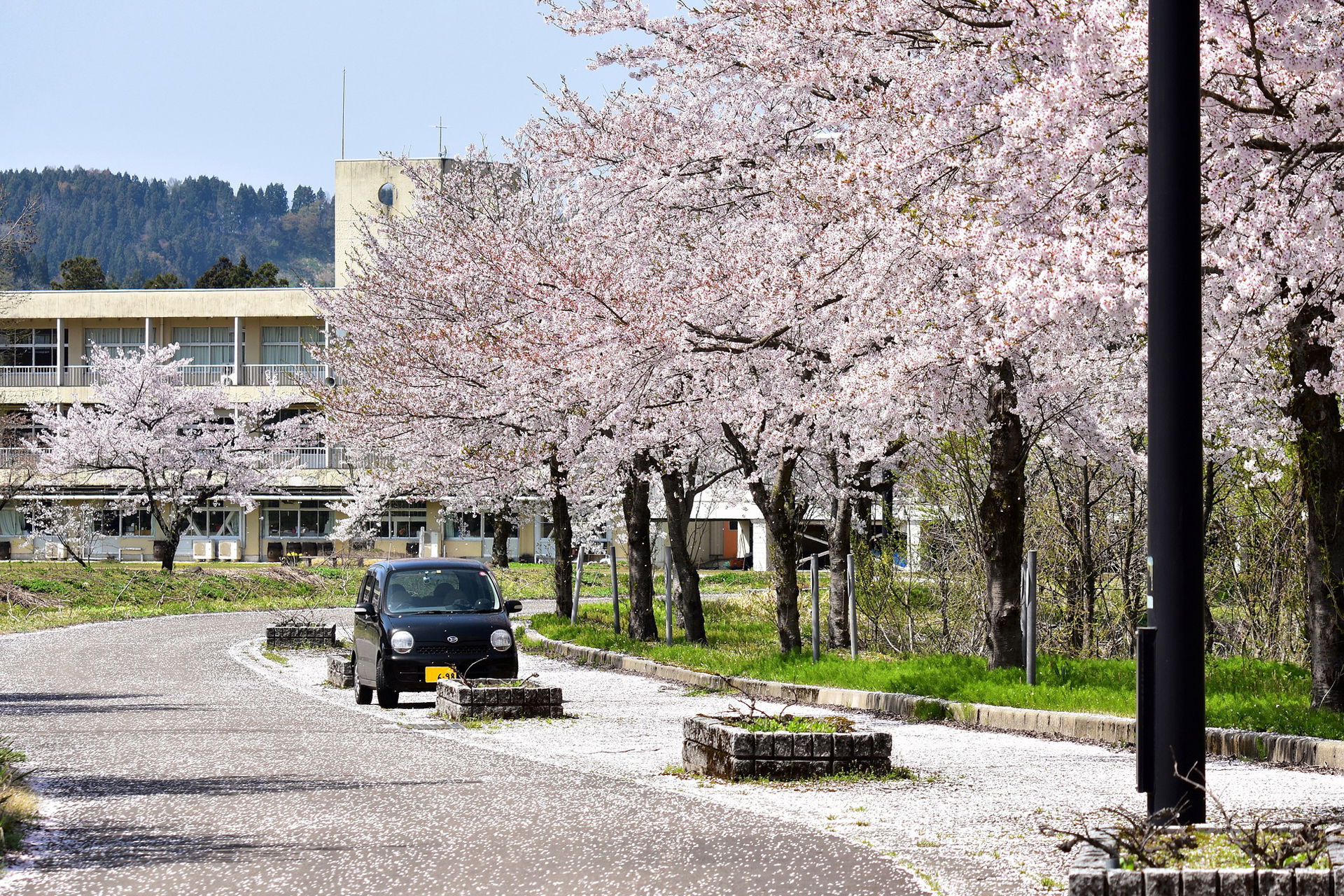Table of contents:
Since most Japanese cities have a reliable and well-developed network of public transport, a car is usually not necessary. Especially in Tokyo, many people do not own a car, even though most Japanese people have a driver's license.
In the countryside, it is exactly the opposite. Few bus and train lines, as well as irregular timetables, make a car practically a necessity.
What driving license do I need?
Of course, you can't just drive around Japan with a foreign driver's license. Depending on your country of origin, there are different regulations. For example, Austrians must obtain an international driver's license before traveling in their home country. This can be done, for example, through automobile clubs such as the Öamtc. The international driver's license is valid for one year.
Germans and Swiss citizens, on the other hand, must apply for a translation of their own driver's license.
Where can I get a translation of my driving license?
You can apply for the translation of your driving license in your home country or in Japan, depending on your needs.
In Germany
If you want to have the translation ready for your entry into Japan and don't want to worry about it anymore in Japan, you should plan about 4 weeks of processing time before your departure. The application can be made online or at the ADAC. After entry, the translation is valid for one year.
One company that offers an online translation service in several European countries is Driving-Japan* . You can apply for the translation online and have it sent either to your home (Europe or Asia) or to your hotel in Japan. The delivery time here is approximately 1 - 5 weeks. The whole thing costs between 84.90 - 89.90 euros.
Alternatively, you can also get the translation online and then print it out at a 7-Eleven store in Japan. In this case, delivery takes only one week and you also get instructions. This option costs 74.90 euros.
*Affiliate Link: If you book through my affiliate link, I will receive a small commission. There are no additional costs for you and you support my blog. I am very grateful to you and wish you lots of fun traveling (^_^)In Japan
If your departure is only a few days or weeks away or you are not yet sure if you will drive a car in Japan at all, you should consider applying for the translation in Japan. This can be easily done at the JAF (Japan Automobile Federation, somewhat like the German ADAC). The JAF has offices all over Japan and you can apply for the translation by mail or in person. You only pay 3,000 yen (about 25 euros) here and the issuance usually takes 1-14 days.
The JAF translation is valid for as long as the original driver's license, but must be reapplied for if the original is changed.
Applying for a Japanese driver's license
In case you are in Japan for longer than one year, you should definitely apply for a Japanese driver's license within that year. An agreement facilitates the process, especially for selected countries such as Germany, Austria and Switzerland, because for their citizens the written test and the on-site driving test are waived.
To apply for a Japanese driver's license, the following documents are required:
- Valid driver's license (it must also be proven here that you lived in the issuing country for at least 3 months after receiving it)
- Official translation of the driver's license, e.g. from the JAF
- Passport
- Application form, which can be found on the JAF website
With these documents you have to go to the driver's license authority responsible for your area. After checking the documents, you will be subjected to an eye test and you can take your Japanese driver's license home with you.
Renting a car in Japan
Renting a car in Japan is no problem and the whole process is quite uncomplicated, although a bit expensive. The cheapest rental cars start at around 50 euros per day, but this does not include costs such as tolls, gas and parking. Of course, you have to pay more for a larger car or an expensive brand.
If you want to drive to the countryside or are traveling with a lot of luggage, a rental car is definitely worth it.
Island hopping should be avoided with cars. A good alternative here is to simply rent a new car on each island, if necessary.
If you would like to know more about the topic "Rental car in Japan", you can find a detailed article here:

Buying a car in Japan
Generally, buying a car in Japan starts out relatively cheap. Compact new and used cars can be bought for under 1 million yen (about 8200 euros). Potential buyers have many well-known brands like Toyota, Nissan and Mazda available to them.
However, there are several ongoing costs to consider. Fees for the MOT, insurance, car tax, as well as parking and gas costs must be calculated monthly or annually. Furthermore, the purchase tax (5%) is incurred upon purchase. For used cars, the transfer fee is added. Also, several documents have to be submitted, for example, you have to prove to the city that you have a parking space so that you don't just leave your car on the street. This is not recommended for tourists, buying a car. A rental car is more worthwhile here.
If you look around on the streets of Japan, you will also notice that there are cars with white and with yellow license plates. The yellow plates signal that these are usually city cars. They are rather small, not as safe as a normal vehicle, and sometimes do not manage to reach the minimum speed limit on highways.
Driving in Japan
Generally, driving in Japan is not much different from driving in Germany. Most drivers are careful and obey the traffic regulations, while road conditions are excellent. You should only be careful not to drive into narrow side streets, especially in residential areas in big cities. Otherwise, as in other big cities: a lot of traffic jams, especially during rush hour and on weekends.
Differences between Germany and Japan
As in England, Japan has left-hand traffic, meaning that everything is reversed on the roads, including the steering wheel of the cars. The good thing is that most Japanese cars have an automatic transmission, so you don't have to shift with the other hand all of a sudden. The high beam in Japan is often used to thank other drivers.
Traffic regulations in Japan
Japan has stricter maximum speeds than Germany. So you should not exceed the following guidelines:
- Highway: 80-100km/h
- City: 40 km/h
- Side streets: 30 km/h
- General: 50-60 km/h
At level crossings, you must always stop completely, even with open barriers. If you cross the tracks without stopping, the police can stop you.
Road signs and traffic signs
Since Japan is adapting its signs to international standards, there are hardly any unknown signs. Especially in big cities, you can also find English signs next to the Japanese ones.
How to pay tolls in Japan
Highways, called "Expressway" in Japan, charge a fairly expensive toll. Also tunnels and scenic roads sometimes charge a fee. Generally, you can pay the toll either automatically with the ETC system or in cash. For the ETC system, you have to register in advance or you can borrow a card, for example from your rental car provider.
Some expressways have a tiered pricing system, so you can use the roads at discounted rates on certain days or times, such as holidays or after midnight.
Dangers in road traffic
As in other countries, you should be especially careful of cyclists, speeders and drivers who disregard red lights. In addition, some Japanese people simply park their cars on the side of the road and block traffic.
Parking in Japan
Especially in big cities, parking becomes a challenge. In addition to the lack of free spaces, especially on weekends and holidays, you have to be prepared for high costs. A parking space can cost several hundred yen per hour. In the countryside and in small towns, however, there are more affordable or even free parking spaces. Only around tourist attractions are there high parking fees in the countryside as well. Shopping centers usually have parking garages, where the parking fees are waived for a few hours after a certain purchase amount. Hotels usually offer parking spaces for their guests for a fee.
Types of parking spaces
In addition to the normal parking spaces, which also exist in Germany, people in Japan also like to use Elevator Parking Lots and parking spaces with barriers. The former is like a high-rise for cars. You simply park your car on a platform and it is automatically lifted to the parking space. Staff are usually available to help. For parking spaces with barriers, a small ramp is driven up under the car after parking, blocking the exit. As soon as the parking fee is paid, the ramp is lowered.
If you park on the street and have to take a parking ticket, you should note that cars in these areas are often towed away from 3 am.
Illegal parking
Fines for illegal parking start at around 80 euros.
Gas stations
In addition to the normal gas stations with service, there are also self-service gas stations. The latter usually only have a Japanese display, but staff are still available for emergencies. Fuel hoses usually have the following colors, but always make sure what you are filling up. Diesel is green or gray, regular gasoline is red, high octane gasoline is yellow.
Japanese police
On the road, you only have to give way to the police or stop when you hear the siren. The police often only drive with blue lights, but that's no cause for concern.
What you should definitely avoid is driving under the influence of alcohol. Japan has no blood alcohol content limit like Germany, and the penalties for this offense are high. The Japanese police are just as strict when it comes to driving without a license. In both cases, imprisonment is the maximum penalty.
Alternatives to a car
Bus
In addition to the normal city buses, there are also long-distance buses that operate both during the day and at night. They are a cheap alternative to trains and cars. If you want to know more, you can read the following article:

Train
Japanese trains are world-famous for a reason. Especially the Shinkansen connects the entire country and takes you to destinations hundreds of kilometers away in just a few hours. Different tickets, such as the JR Pass and the Seishun 18 Kippu , are available to you. You can learn more in the following two articles:
Public transport
Especially in cities like Tokyo and Kyoto, public transport such as buses and trains are much more pleasant than a car. They are not only cheaper, but you also save yourself the long search for a parking space. It is also much easier to navigate through the public network. Japanese buses and trains are also very safe, clean and run with a high frequency.
Airplane
Budget airlines like Jetstar Japan, Peach Aviation and Skymark Airlines often have special offers and are probably the best option if you want to cover long distances quickly. Regular flights to Osaka, Sapporo, Fukuoka and other destinations depart from Tokyo.




Comments